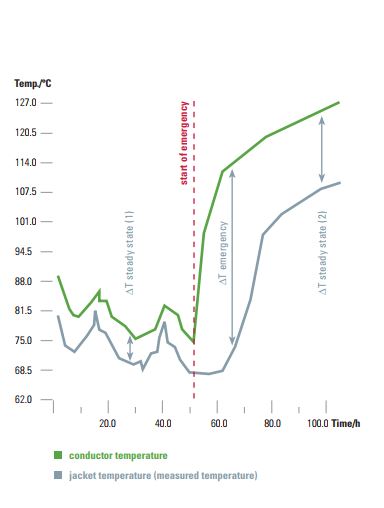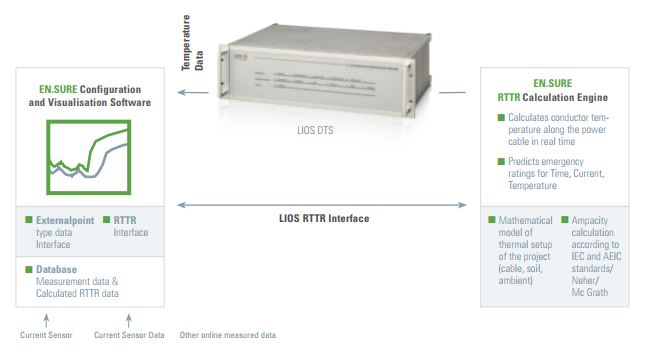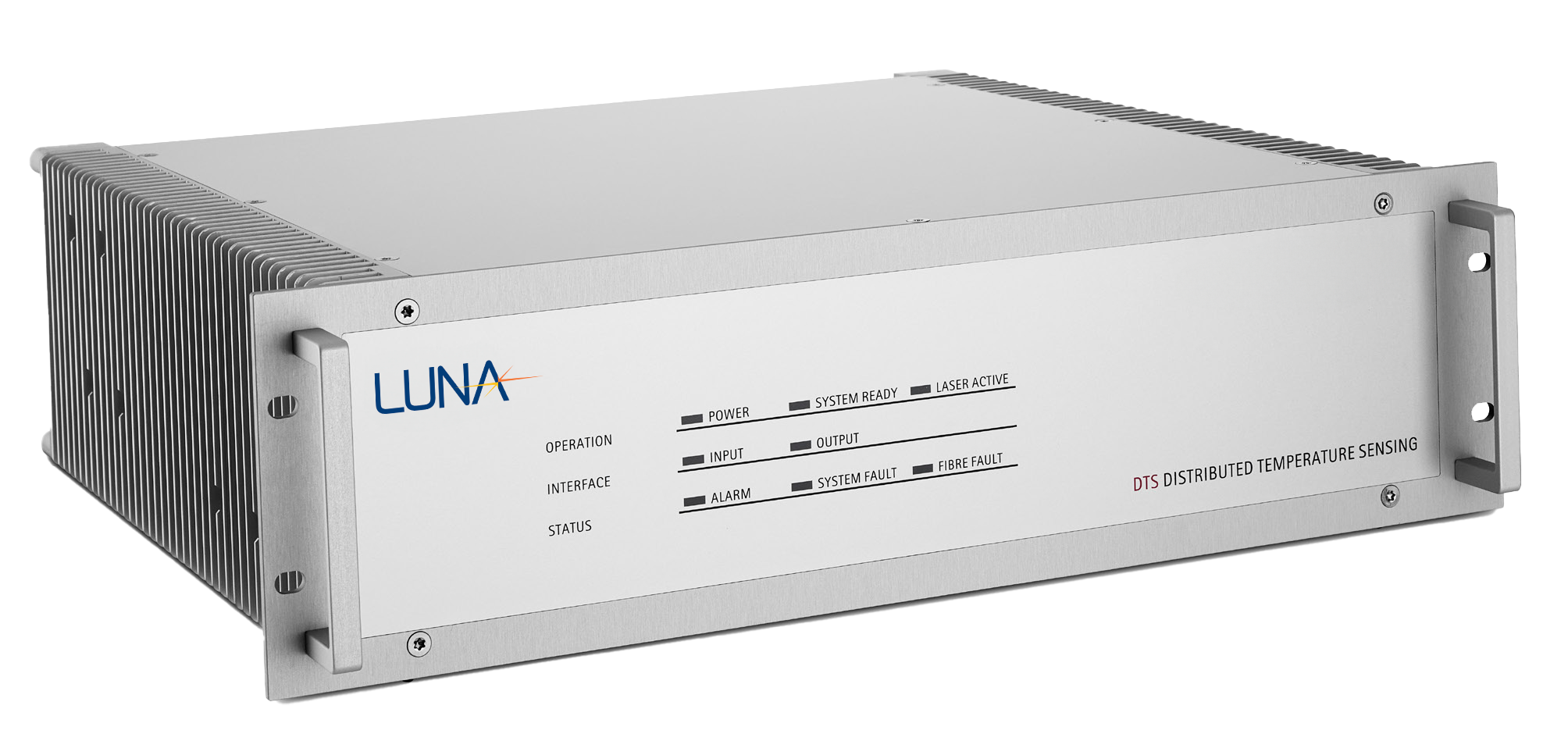If you have a Distributed Temperature Sensing (DTS) system in place, it is not too hard to measure temperature on the outside a cable. You will have access to real-time temperature at the sheath or jacket. However, you would want to know the temperature inside the cable, inside the conductor. If the conductor temperature is too high, the cable risk being permanently damaged.
Knowing the conductor temperature is trickier but – hooray – we can help!
RTTR to the rescue
Regardless your cable and installation type, there is a solution for you. The solution is called Real-Time Temperature Rating or simply RTTR (sometimes it is called Dynamic Cable Rating or DCR but let us stick to RTTR throughout this page).
The RTTR system is a piece of complex software, a mathematical model customized to your exact installation. Based on relevant input such as current load, ambient temperature, and thermal resistivity, it continuously computes the conductor temperature.
The advantages? You can stop worrying about operating your cables beyond their limit – even during emergencies. You get better reliability, higher predictability, improved safety and – on top of this – you get lower maintenance and operating costs.
Get visibility and predictability
- If I apply a high load to my installation for a period, what is the conductor temperature at a given time?
- If I apply a high load for a period, when will my installation reach its emergency temperature?
- If I know the initial conditions and the maximum operating temperature, what is the maximum current that my installation can carry?
How can I get RTTR?
The RTTR is an add-on to our LIOS EN.SURE DTS solution.
It provides the necessary information to prevent overheating of the insulation and, consequently, avoid permanent thermal damage made to the transmission cable installation.
The RTTR calculates the current-carrying capacity (or ampacity) under given conditions of the cable installation for the steady state and transient. And it provides continuous and automatic adjustment of calculation parameters such as ambient temperature, thermal resistivity, etc.
You get access to a transient simulation that enables you to estimate the current that can safely be transferred from another circuit to the monitored installation in emergencies or during maintenance.
The EN.SURE RTTR can be used for emergency ratings from 10 minutes and up to 2000 hours.
Remove uncertainty during an emergency
RTTR removes all uncertainty left by the DTS.
The DTS measures the real-time temperature at the sheath or jacket of a cable. The sheath temperature gives a good idea of the temperature of conductor, but unless an accurate model for the conductor is provided there will be some uncertainly left. The uncertainty is small during steady state operation but could be considerable during an emergency.
The below figure illustrates the temperature of the jacket and conductor during an emergency.
While the temperature difference between the jacket and the conductor can be small in steady state, the temperature difference can rise significantly only moments after the onset of an emergency.
The cable insulation has a large inertia. The unintended heating of the conductor can only be detected at the jacket after minutes to hours later. Additionally, the temperature difference changes with the loading level making it even more difficult to predict. The temperature difference is bigger for larger loading levels.
Typically, the actual maximum temperature reading of each configured cable section and the actual electrical current reading are computed to build the dynamic cable rating of the installation, based on the IEC 60287 and IEC 60853 standards.
A model for your installation
Virtually, every cable construction available in the market can be modelled: One-core, three-core, sheathed cables, concentric neutrals, armored cables, screens, shields, beddings, servings, jackets and combinations of different types of sheaths.
Also most installation types can be modelled: Duct banks, multilayer soil, backfills, directly buried, buried ducts, buried pipes, cables in air (including groups of cables and riser poles) and cables in tunnels.
Your installation may include adjacent heat sources or heat sinks such as steam or water pipes. Unique to LIOS EN.SURE is its ability to model several materials with different thermal resistivities, for example: Stratified soil layers, multiple duct banks, and multiple backfills.
Talk to us about your cable construction and installation type and let us make an RTTR model that matches your exact installation.






